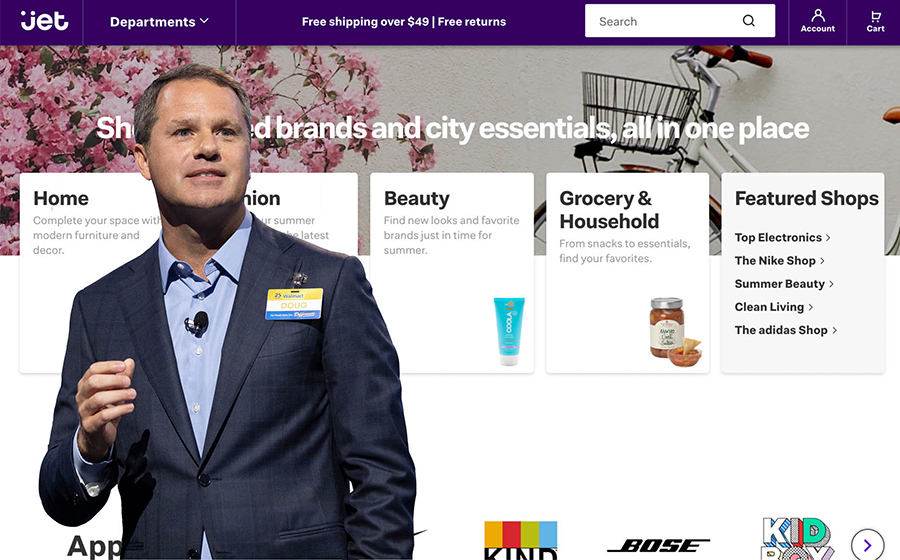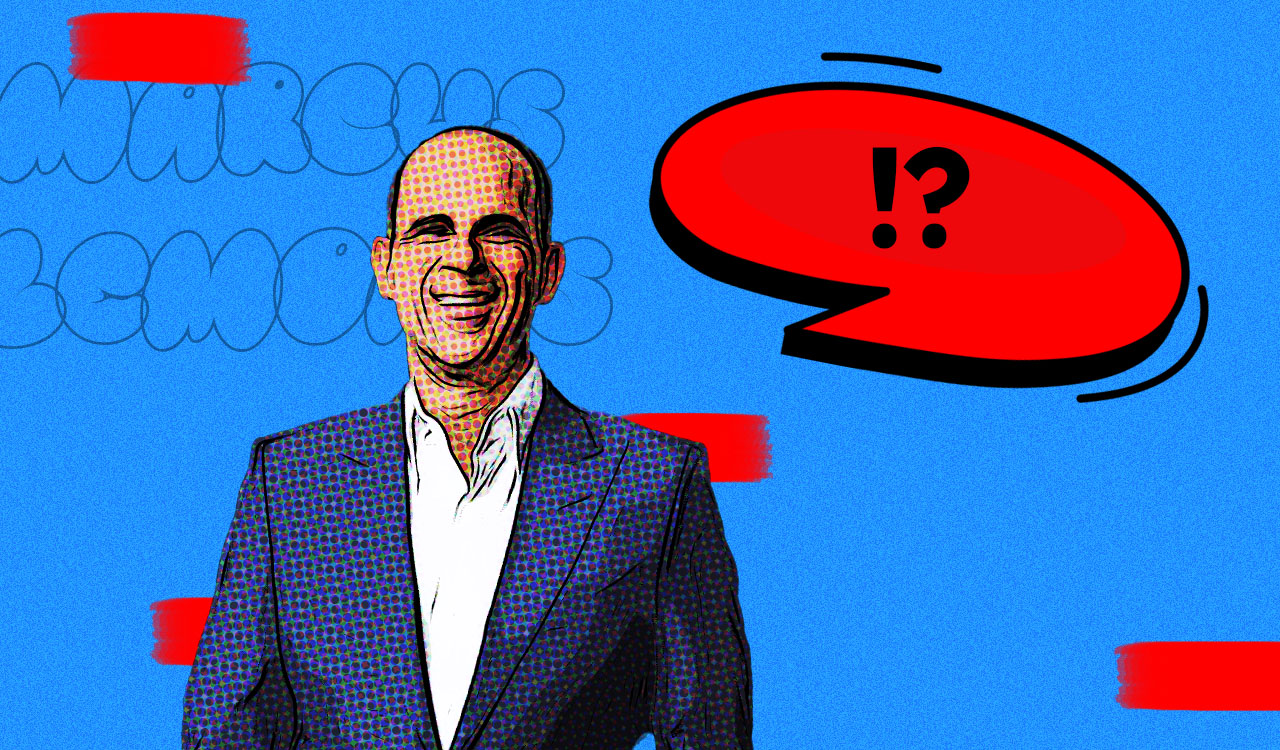Is Doug McMillon, CEO of Walmart beginning to buckle under the pressure from last century\’s comfortable mindsets and a culture that has succeeded by doing the things they\’ve always done, but just doing them better? Are stakeholders pushing back (the board included) on the radical transformation McMillon has set forth? Further, is he caving in under the relentlessly demanding Wall Street \”short-termers?\” Even though Walmart won\’t get an Amazon-like pass, in our opinion, McMillon must continue his bold charge forward to transform Walmart.
\”A billion here, a billion there, and pretty soon you\’re talking real money?\” This quote was attributed to the former congressman, Everett Dirksen. So, I would say that Walmart\’s worldwide revenues of about $500 billion is real money. And a reported billion-dollar e-commerce loss on sales of about $22 billion, expected this year in the U.S., would seem like a rounding error. As the world\’s largest retailer by far, and at roughly twice the size of its targeted rival Amazon, one would think that whatever investments Walmart makes to \”get big fast\” in the e-commerce world (including its $3.3 billion acquisition in 2016 of Jet.com along with its founder Marc Lore), would not only be acceptable, but absolutely necessary.
However, as reported in Recode, and also obtained from a reliable source, even as Walmart\’s e-commerce sales increased by 40 percent last year, and its stock price is up 53 percent since acquiring Jet.com compared to a 38 percent increase for the S&P 500, the expected loss is causing internal tensions, political infighting and even pressure from CEO Doug McMillon and the board of directors on Marc Lore, President and CEO of Walmart\’s e-commerce, to cut the losses. The digital native brands that were acquired by Walmart under Lore\’s strategy to build out a \”long tail\” of exclusive brands (Bonobos, ModCloth, MooseJaw, ShoeBuy, Hayneedle and Eloquii) that Lore believed would differentiate Jet.com from Amazon. ModCloth is currently on the block as a loss-cutting move. And, who knows what the fate of the others will be, given the fact that they are still not profitable, The article also reminds us that even though such a loss is \”eye-popping,\” Walmart is \”used to printing cash,\” bringing in nearly $7 billion in profits last year.
Redefining Loss
Whoa!!! As I\’m writing about this whole money-losing issue, the biggest money-losing machine I can remember in my lifetime is Amazon since its inception in 1994. The reason as stated by founder Jeff Bezos on day-one was, \”we must get big fast.\” The central point behind that statement was to beat all potential copycat competitors to dominance. And to do that, he knew that the investment in building out the organization, the distribution and fulfillment infrastructure, bringing millions of brands and products onto the site and all other operations required to scale would require billions of dollars and a time-consuming rollout, even though his mantra was \”get big fast.\”
And from day-one, Wall Street bought into this hyper-growth strategy, dismissing the need for profits as the Amazon nuke delivered amazing growth every year from inception. In fact, their current market cap, somewhere around a trillion dollars, is larger than the next seven largest retailers in the U.S., which of course includes Walmart.
And how many times have I written about how puzzling this is, indeed unfair to the legacy retailers who must show profitability quarter after quarter or their stock prices get hammered. Well, \”it is what it is,\” as they say.
Redefining the Status Quo
However, I have also been writing optimistically that Walmart, under CEO McMillon, would not accept \”it is what it is.\” And from his own day-one, it appeared he was not accepting any status quo. He has lit matches under every last-century process and function with great speed for such a behemoth, and he has been dismantling and replacing the antiquated retail model with a structural and strategic model that I have predicted will become Amazon\’s biggest headache.
Yes, there will be failures. But in this era of moving at warp speed and seismic shifts powered by technology, if every business is not failing fast and often, learning and constantly seeking better ways, they are not breathing and soon will be dead.
So, my message to Mr. McMillon is that a billion-dollar loss in his e-commerce business should be viewed as an investment. He should put his independent-thinking hat on and not buckle under pressure from the board or Wall Street. The fate of so many legacy retailers will be their inability to change their mindsets and cultures; most would like to simply do what they\’ve always done, but doing it better. Death is near for them.
The Long View
McMillon made \”a shot heard round the world\” when Walmart acquired Jet.com in 2016 for $3.3 billion, along with arguably the real value in the purchase: Marc Lore. Lore was a part of the Amazon culture and Bezos philosophy for years, having sold Quidsi, his online diaper business to Amazon in 2010. Lore went with the business and worked for Amazon for a couple of years. He then left to build Jet.com, and one of its key competitive advantages over Amazon was an efficient, low-price \”basket\” concept. Of note, Lore also understood he would incur huge losses as his investors poured billions of dollars into his race to build out the organization, logistics and distribution infrastructure.
Accordingly, as stated by Recode, sources say \”Lore has aggressively pitched the company\’s management and board on the idea that Walmart needs to spend billions a year on new warehouses if it\’s going to seriously compete online with the \”Everything Store\” and its speedy delivery offerings.\” Again, I emphasize that what Walmart views as losses in its e-commerce business, Lore with his startup mindset, views as investments.
So, McMillon obviously realized he had to get smart and big fast in e-commerce (Walmart was way behind at the time). They currently have a mere 4.7 percent share of the online market, (which is also only 5 percent of Walmart\’s total business), while Amazon owns 38 percent. McMillon obviously saw a rocket propellant in Jet.com and Lore. I hailed it as a brilliant move, which I still believe, IF McMillon doesn\’t cave. The Amazon part of Lore\’s DNA suggests that he totally gets the time and investment required to build out the omnichannel strategy and structure. And I also believe that McMillon must have signed off on Lore\’s strategy up front, otherwise the deal would not have happened.
Vision Quest
Considering this, it is hard for me to believe that McMillon would be willing to give up on building his vision in this very early stage of getting it done. Who knows whether the board is getting cold feet or not? Rob Walton is Chairman and three other Walton\’s serve on the board, and the Walton family owns roughly half of the company. So, I\’m sure they approved of McMillon\’s bold vision. According to Recode\’s sources, \”McMillon has emphasized his commitment to continue his fast pace forward, by saying \”e-commerce in the US is becoming a winner take all industry. Or, at a minimum, a winner take most market.\” Plus, he acknowledged about the e-commerce unit\’s profitability in an analyst meeting last October that, \”…I have been surprised at just how many brands there are out there to get signed up…Who knew we needed 2,000 of them. I didn\’t.\”
While this does not hint of McMillon changing course or slowing down, it does highlight the additional time and investment required to bring the millions of more products on their site to compete with Amazon. However, getting the products is one thing, supporting the infrastructure to house and distribute them is another. Again, we\’re talking billions and undoubtedly deeper losses for the e-commerce business, which again, Wall Street will not take lightly.
Building the Future
Amazon has been building out its fulfillment centers across the country for decades and has about 110 centers to Walmart\’s roughly 20. And while I have conjectured that Walmart\’s 4750 fleet of stores located within a 10-mile radius of 90 percent of the population could also be used as distribution centers, thus crushing Amazon\’s delivery capabilities, Walmart does not yet have a large enough in-store product selection to use the stores to fulfill the amount of online merchandise orders to compete with Amazon. So, product and distribution infrastructure need to build out at the same cadence. Oh, and Walmart will need to add more employees to the mix to get it done. And \”fast\” is the operative word.
Family Feud
Other headaches abound for McMillon according to Recode. Political infighting would be expected when a solidified culture of the gargantuan Walmart model is being totally disrupted and asked to endure the growing pains of fundamental transformation. And when the new kid on the block (Lore) is tossing billions of dollars into the new thing and losing money in the process, one could naturally expect Greg Foran, CEO of Walmart\’s core U.S. store business, which is making money, to add his two-cents-worth about where investments should be made. Furthermore, Lore is getting all of the media attention and has been given credit for initiatives Foran actually created prior to Lore\’s arrival. Speed is of the essence for McMillon, and these cultural and political issues can be a huge drag on the needed pace of change.
One enormous bright spot for McMillon is Walmart\’s clear dominance in the grocery sector. Bezos said in the very early days that Amazon must become dominant in apparel and grocery. Having acquired Whole Foods, Amazon is still trying to learn the business and figure out how to become dominant.
I say, forget it. Walmart is so far ahead and launching new initiatives that will so outdistance Amazon that Bezos will struggle just to stay in the game. Walmart has 4,750 grocery stores in the U.S., capturing about a 30 percent share of market, with a whopping 50 percent share in 43 metropolitan areas and 160 smaller markets across the U.S. Whole Foods has about 500 stores, capturing a measly 2 percent share. And as Whole Foods has been nicknamed Whole Paycheck, Amazon is said to be figuring out how to expand into the grocery value sector.
My final two cents worth of advice to Mr. McMillon: do not buckle under internal or external pressures, including Wall Street. Stick to your vision and view losses as investments to propel Walmart into a successful and dominant position in the 21st century.




